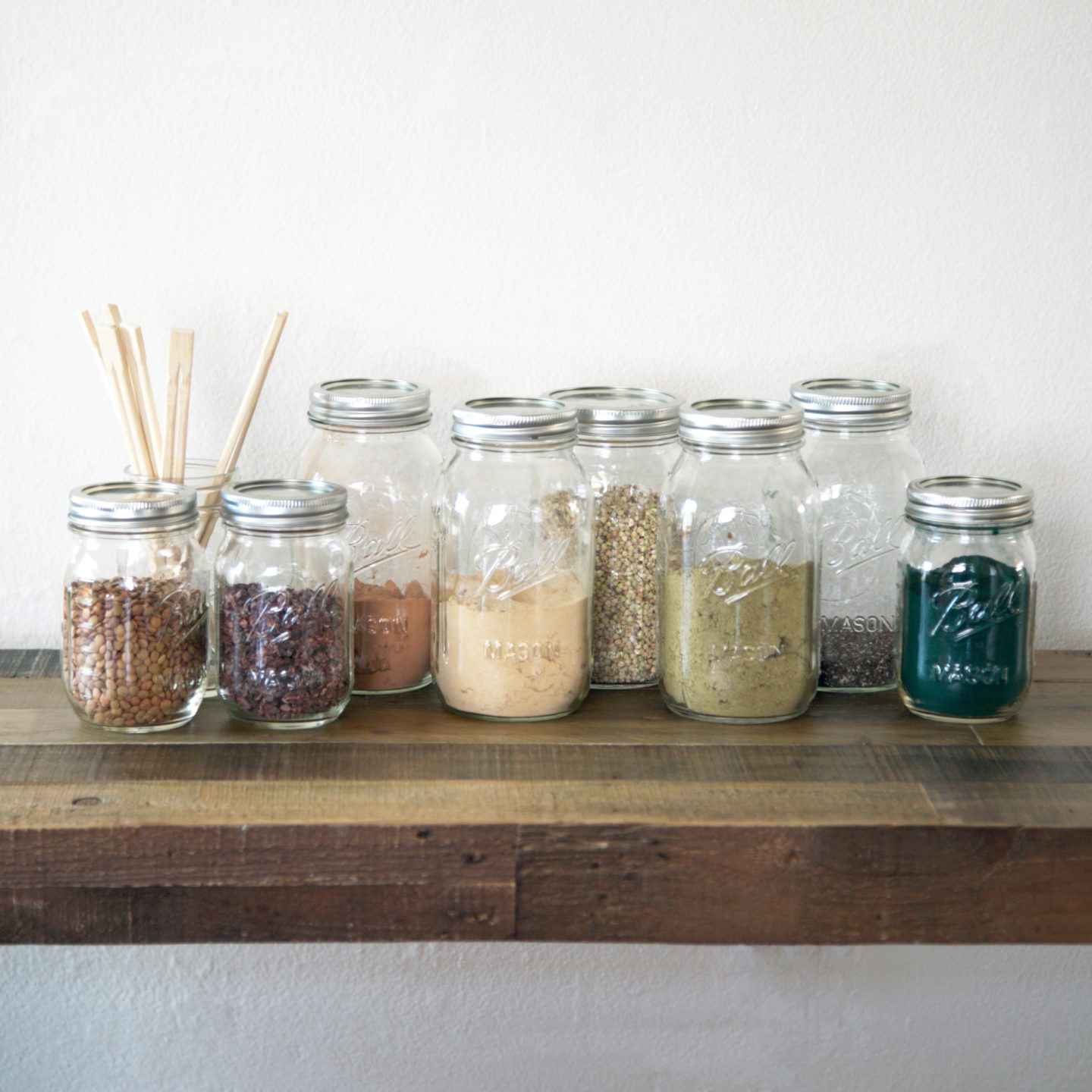
Reusing glass mason jars has a sorta timeless, stylish sensibility if you will. It’s a simple way to add that wholesome, organic, healthy vibe into your kitchen and home while providing a safe food storage solution at the same time. These days so may brands, markets, and juice bars are using glass jars, so it’s easy to start collecting (that’s how I get mine). If you let it happen naturally rather then buying new empty jars, you may feel better about it. Start holding on to the ones you like and use them for your favorite colorful superfoods and more. It adds a lovely, homey feel into your kitchen as it looks and feels a million times better then having lots of toxic plastic bags and containers with brand labels on them. Switching from plastic to glass also means a cleaner, safer home plus your stored food will taste better and stay fresher longer.
Pictured above are some examples of what I’m using mine for; lentils, chopsticks, cacao nibs, cacao powder, maca, buckwheat (not wheat, a gluten-free seed), hemp protein, chia seeds, and spirulina. The glass jars can be used for so many other things too, like regular drinking glasses, drinks to go, soups, DIY beauty products, make-up or paint brushes, other projects, herbals, etc. I also saved some small mini glass jars to use as shot glasses (e3live, ginger and wheatgrass shots only, jk, but it just might be time to get rid of your old cheesy, novelty or souvenir shot glasses). You don’t have to showcase them on the counter, they look great in the kitchen cabinets and other storage spaces. It’s just a cute little tip for adding a little more style into your home as well as limiting toxic plastics. If you want to buy new this may be a good resource – Freund Container.
For those concerned about BPA: The most popular mason jars, Ball and Kerr canning lids have been BPA-free since 2012, however the older lids most likely do contain bisphenol A- (BPA-). The BPA-free lids can be identified by the “Made in USA” on them (they have always been made in the United States, but have not always said so on their packaging). The new packaging should always says “BPA-free.” You may want to think twice about buying from a flea market or thrift shop.
